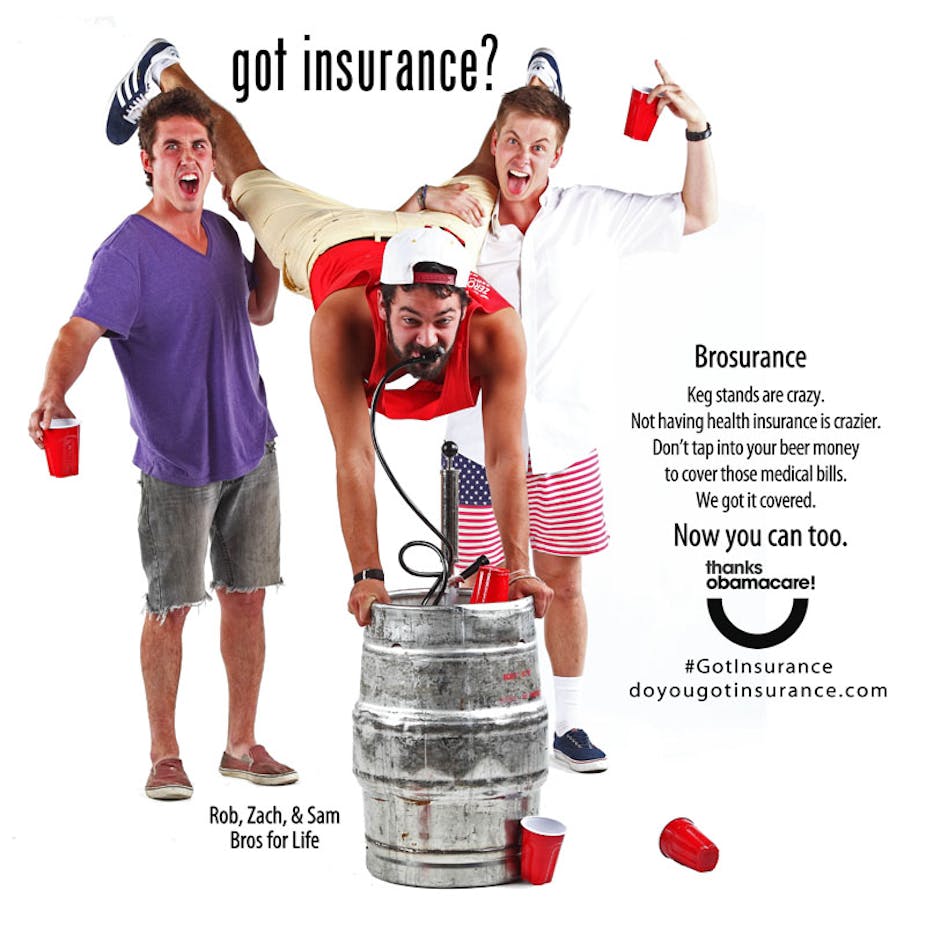The second open enrolment period of the US Affordable Care Act, which was due to close on February 15 has been extended in most US states. Estimates vary, but around 10m people have already enrolled on the exchanges across the 37 states using the national HealthCare.gov enrolment platform and the 14 sites operated by individual states and Washington DC.
The exchanges, or marketplaces, were established by the ACA for eligible citizens to compare and sign-up for private qualified health insurance plans. A report published by the US Department of Health and Human Services suggested around 3m, or 42%, of the 7m who had signed up using the site by mid-January were first-time users and around 2.5m (35%) of these were under the age of 35.
Thinking about the future
Reaching the under-35s, the so-called “young invincibles”, is crucial to the success of the exchanges. Insurance is a notoriously dull product – one that has to be sold, and sold relentlessly. As a product it appeals to our desire for a perfectly restorable world, with a core promise to make good the damages wrought by everyday catastrophes such as illness, death, accidents and theft. As the poet and insurance underwriter Wallace Stevens put it, our instinct:
…Is to go on indefinitely like the wax flowers on the mantelpiece. Insurance is the most easily understood geometry for calculating how to bring the thing about.
The young tend to care less about catastrophe and insuring against it. Since this instinct is usually felt more keenly with advancing age, a perennial problem encountered by life and health insurers is adverse selection bias. Put simply, those with cause to fear health risks are more likely to sign up for insurance. With the exception of smoking, insurers who offer cover on the ACA exchanges are prohibited from discriminating against existing conditions, so the risk for them is enrolling a disproportionate number of ageing and sickly – and therefore expensive – enrollees.
One traditional way of meeting the challenge of marketing a dull, technical, unenticing and often expensive product is by personal selling. Historically, agents and brokers have played a huge role in the establishment of insurance markets. Personal interaction or “facetime” is still important in the ACA’s outreach.
Advisers have played a major role in many states. Get Covered Illinois, the state exchange’s enrolment arm, has recently turned to agents to reach out for customers. Agents can help people navigate the anxieties that come with buying insurance. But agent services are more likely to appeal to members of the “sandwich generation” of 45 to 65-year-olds. They are a lot less attractive to the crucial, young target group. Young invincibles are the “millenials”, born between the 1980s and the 2000s and accustomed to fast, digital interactions.
Going digital, but smartly
The Commonwealth Fund Biennial Health Insurance Survey 2014 suggests that the subsidised insurance options and protections offered by the ACA had reduced the number of uninsured working-age adults from around 37m (20% of the population) in 2010 to 29m (16%), by the second half of 2014.
But how do insurance providers appeal to younger groups? The first open enrolment period in 2013-14 had mixed results. Some were disappointed by the 28% enrolment of the 18-34 age group. The percentage sounds healthy, but around 40% of uninsured Americans are in this age group. An ideal result would therefore be a lot higher than 28%.
Outreach targeted at younger people included a heady, sometimes controversial, mix of social media and advertising messages. The kegstand ad, featured above, was one of a series by Got Insurance. The series provoked outrage in some quarters by seeming to endorse behaviour out of line with public health messages.
The series was originally created by the Colorado Consumer Health Initiative (CCHI) and Progress Now Colorado Education in Autumn 2013 as part of the Thanks Obamacare campaign. It offered a riposte in a climate where the Koch brothers had funded “creepy gynaecologist” videos that called on viewers to “empower yourself by opting out of Obamacare”. But the series also demonstrates how easy it is to be caught trying too hard to speak the language of a younger demographic: “Brosurance” anyone?
There have still been notable successes and the Obama administration has innovated constantly in its outreach. Obama has been noted previously for his energetic adoption of multi-channel networked campaigning, reaching out to target populations across different platforms such as YouTube, Facebook, Twitter and other social media.
This year, splashy youth speech has given way to a gentler, more local and better targeted approach This was illustrated neatly in the final weeks of open enrolment. Since national youth enrolment day on January 29, Barack and Michelle Obama and his vice president, Joe Biden, have tweeted childhood photos of themselves under the banner “no one stays young and invincible forever”.
This was followed last week by an onslaught of Valentine’s Day tie-ins, all hammering home “the insurance relationship”.
Digital channels are at the centre of marketing to the young. But that’s not the only way the digital figures in the post ACA context. New York-based health insurer start-up Oscar is not just a relentless user of multi-channel, digitally oriented marketing. It is the first to respond to the “be as healthy as you can” responsibility enshrined in the legislation by introducing digital, financial incentives. Oscar members, for example, can order a free Misfit fitness band and be rewarded with Amazon vouchers for hitting individually tailored fitness targets.
It is too soon to say whether this type of digital “nudge” will spread beyond niche providers but the incentives for the industry are already there. Youth enrolment figures might not be as high as some pundits think they should be ideally. But given the nature of the task, if when the figures finally settle, 35% of new enrolments do prove to be under 35, this would be a major accomplishment.

